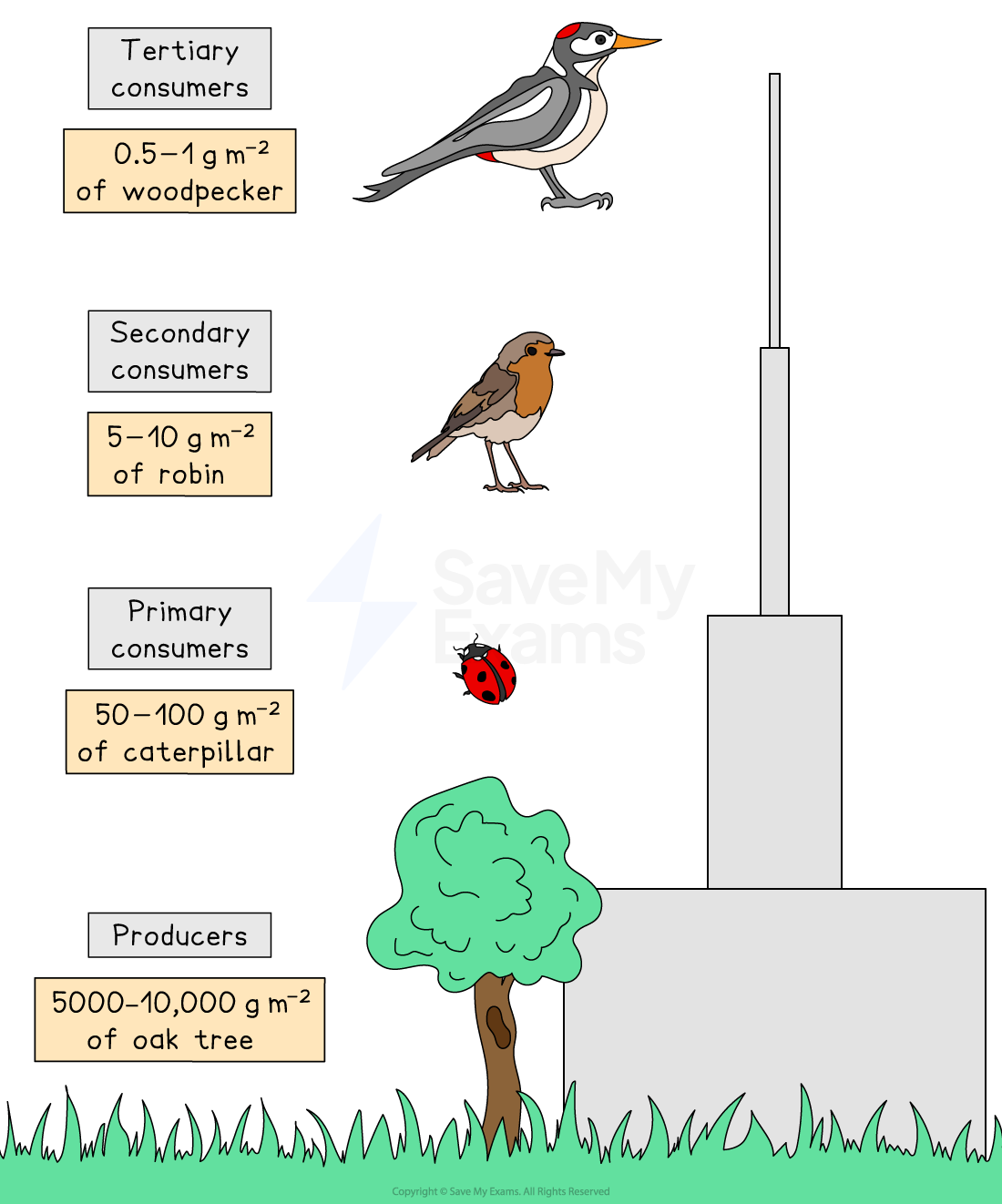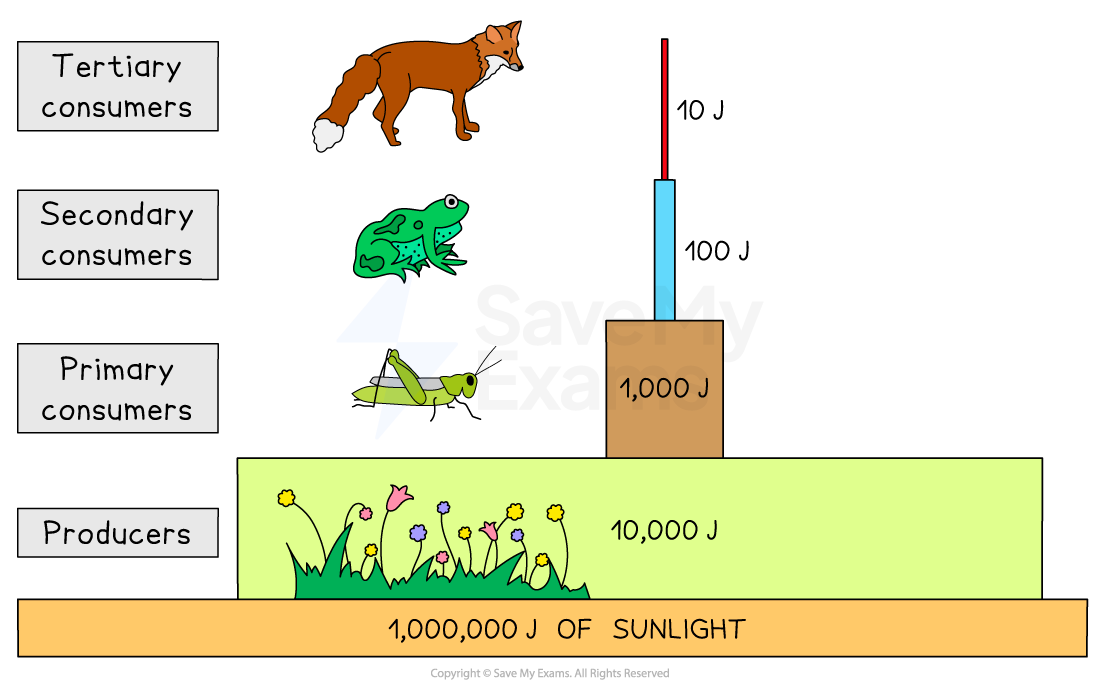Food chains, Food webs & Pyramids (Edexcel IGCSE Biology): Revision Note
Exam code: 4BI1
Did this video help you?
Food Chains
Food chains are diagrams that show the energy flow between organisms in an ecosystem
The arrows in a food chain represent the transfer of energy between trophic levels
All food chains start with producers; this is because they convert energy into a form that can be used by other organisms, e.g. plants convert light energy into chemical energy

Food chains show the transfer of energy that occurs when organisms feed
Food Webs
Food webs are networks of interconnected food chains
Food webs can aid in the understanding of the complexity of feeding relationships in ecosystems
Note: within a food web an organism can be in different food chains and have a different trophic level for each

Food web shows the complex feeding relationships within ecosystems
A change in one population within a food web can affect other populations, e.g. for the food web above a decrease in the rabbit population might lead to:
an increase in grass growth, due to decreased feeding
a decrease in the fox population, due to reduced food availability
an increase in caterpillars and earthworms, due to increased growth of grass
a decrease in the frog and mouse populations, as foxes would need to compensate for the reduction in rabbits
Examiner Tips and Tricks
Exam questions about food webs are common, so be sure that you know how to follow chains of events through each food chain within a food web.
When describing events in a food web it is a good idea to avoid stating that an animal or plant population would ‘die out’, as this is unlikely to happen; you should instead state to increases or decreases in population size.
Did this video help you?
Food Pyramids
Pyramids of numbers
Pyramids of numbers show how many organisms are present at each trophic level of a food chain
The size of each bar indicates the number of organisms present
A food chain containing three organisms can be represented in a pyramid of numbers with three bars:
grass → vole → owl

The bars in a pyramid of numbers indicate the number of organisms present at each trophic level
In some food chains many small organisms may feed on few large organisms; in this case a pyramid of numbers will not be pyramid shaped
E.g. for the food chain:
oak tree → caterpillar → robin → woodpecker
Pyramids of biomass
Pyramids of biomass show the mass of living organisms present at each level of a food chain
Biomass = mass of living matter
Pyramids of biomass are always pyramid-shaped; this is because the available biomass always decreases at higher trophic levels of a food chain
E.g. for the same food chain shown above:
oak tree → ladybird → woodpecker

Pyramids of energy
Pyramids of energy illustrate the stored energy within the biomass at each trophic level
As with pyramids of biomass, pyramids of energy are always pyramid-shaped
This is because energy is lost from food chains at each trophic level
E.g. for the food chain:
grass → snail → frog → wolf

Drawing food pyramids
When drawing any type of food pyramid, there are several conventions that should be followed:
the trophic levels of the organisms must stay in the same order as in the food chain, with producers at the bottom, followed by primary consumers, then secondary consumers, then tertiary consumers etc.
each bar must be labelled to indicate the trophic level
the length/width of a bar reflects the unit represented by the pyramid; a longer/wider bar indicates:
more organisms
greater biomass
more stored energy
bars should be the same height
if graph paper is provided then bars should be drawn to scale
Examiner Tips and Tricks
Remember that pyramids of biomass and energy are always pyramid-shaped, but pyramids of number can be any shape, depending on the size of the organisms involved.

Unlock more, it's free!
Did this page help you?